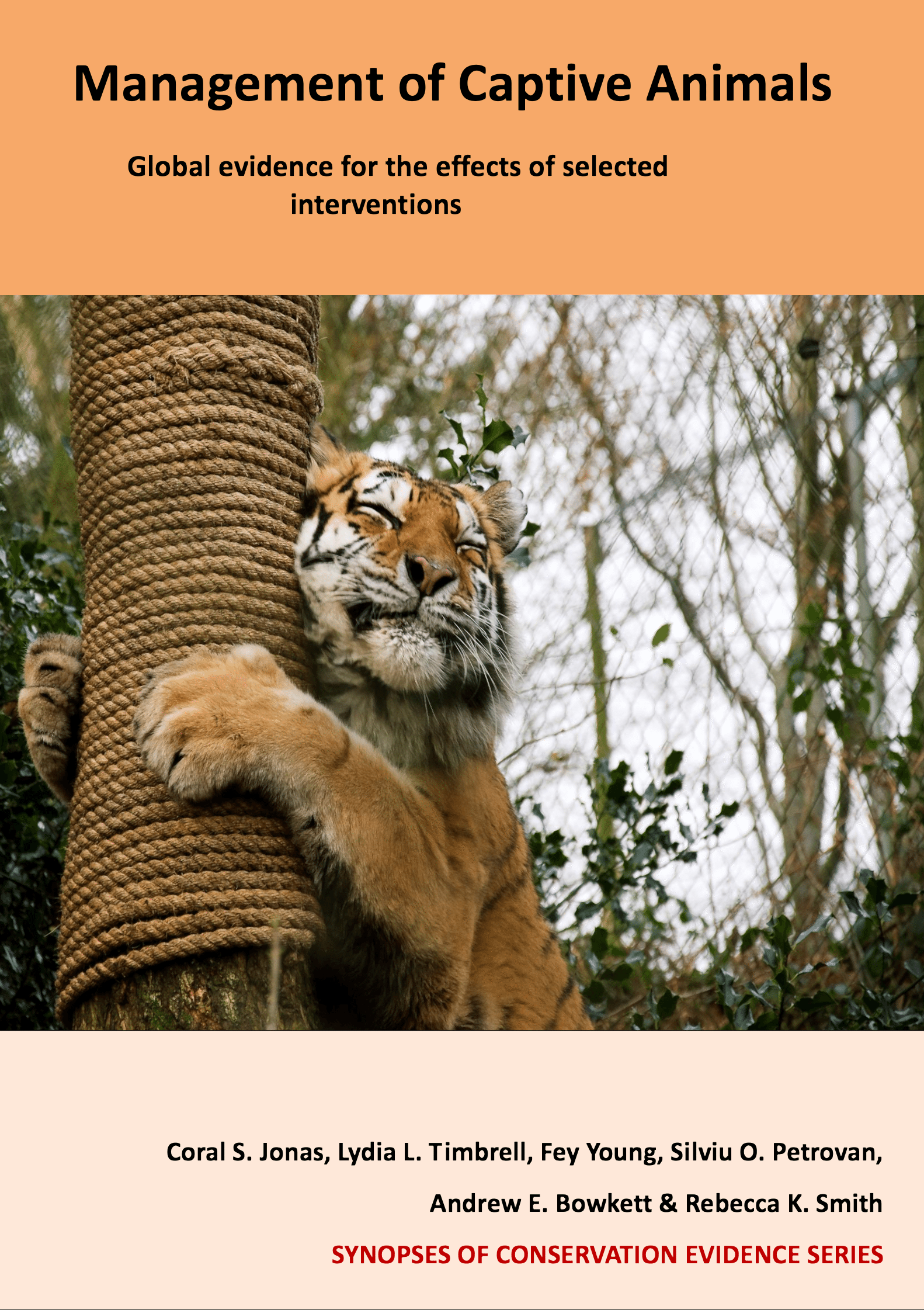Primates: Present food frozen in ice
Overall effectiveness category Likely to be beneficial
Number of studies: 2
View assessment score
Hide assessment score
How is the evidence assessed?
Effectiveness
60%Certainty
50%Harms
0%
Study locations
Supporting evidence from individual studies
A replicated, before-and-after study in 1996 in the USA (Schapiro et al. 1996) found that when frozen juice was provided to rhesus macaques Macaca mulatta more time was spent feeding and less time inactive than when pellets were fed. Time spent feeding increased from 14 minutes/hour when pellets were fed to 24 minutes/hour when frozen juice was offered. Inactivity was lower with frozen juice (two minutes/hour) than when just pellets were provided (five minutes/hour). The monkeys (n=63) received frozen juice presented as a 100ml block of sugared drink mix; eight different flavours were used. The frozen juice was presented to individually housed macaques at intervals of 1.5 hours, during which 15 minutes of animal observations were conducted on all monkeys. Frozen juice was presented to each monkey every weekday for six months with control observations, when just pellets were provided, conducted over six months between times when enrichment devices were given. (CJ)
Study and other actions testedA before-and-after study in 2009 in Ireland (Wells & Irwin 2009) found that when food was presented as frozen ice pops foraging of moloch gibbons Hylobates moloch increased and time spent outside the indoor enclosure increased compared to when fresh fruit and vegetables were presented in one place. Significantly more instances of being outside and number of times gibbons were seen foraging were recorded when food was presented in ice pops (times outside: 134; times foraging: 43) compared to when fruit and vegetables were offered alone (times outside: 96; times foraging: 20). A group of gibbons were presented with ice pops for five days, with three ice pops suspended within the animal exhibit each time. The gibbons’ behaviour was recorded every five minutes for five hours per day for 12 days. (CJ)
Study and other actions tested
Where has this evidence come from?
List of journals searched by synopsis
All the journals searched for all synopses
This Action forms part of the Action Synopsis:
Management of Captive Animals
Management of Captive Animals - Published 2018
Captive Animal Synopsis




















